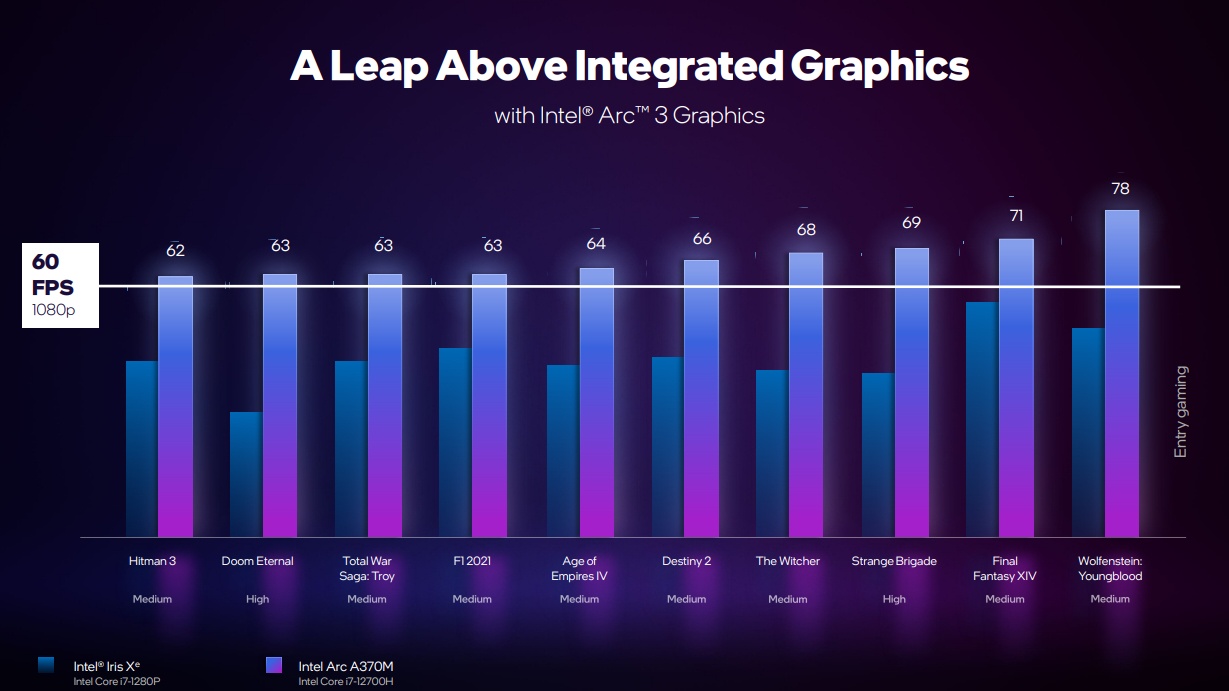Intel’s low-end desktop graphics card has had its gaming performance leaked by a pretty reliable source: MSI. The company’s loose lips have been lifting the lid on AMD Zen 4 (opens in new tab) goodies recently and has now turned its gaze upon Intel’s upcoming China-first desktop graphics card range.
On a hastily removed advert for an upcoming gaming PC sporting Intel’s new GPUs, MSI notes the general performance metrics of the Arc A380 card in a handful of esports-y titles, all using the medium or low presets.
My machine translation of the four different games highlighted didn’t massively help my understanding of what games the advert is actually referring to, but the initial report from Hardware Times has certainly helped. Though I did have to do a Google image search for the first one. Anyways…
The budget Intel Alchemist GPU, at 1080p, was shown with Naraka: Bladepoint reportedly checking in at over 85 fps, League of Legends at over 200 fps, PUBG at over 94 fps, and Overwatch at over 100 fps.
That sounds a lot like the performance Intel suggested would be offered by the laptop versions of its Arc 3 graphics cards, which is no bad thing if there is a certain level of parity between them.
Especially as the A370M mobile GPU has been spotted delivering performance around the RTX 3070 level. Though the Intel Arc benchmarks have been a bit of a mixed bag, according to the leaked numbers, indicating that drivers may still need a little work.
The MSI numbers looks like performance gleaned from a standard version of the Arc A380 graphics card, but MSI lists two different systems: an entry level M301 Dragon Shield with a Core i5 12400F CPU alongside its stock Arc A380 GPU, and another with a Core i7 12700KF and an overclocked version of the 6GB graphics card.
We’ve already heard that Intel would be focusing its graphics card launch first in China (opens in new tab), with the low-end parts. And then only in pre-built PCs. In a way that does make some sense; the internet cafe market is huge in China, and if it can get some penetration in that market from its partners, such as MSI, then that gives it a bit of a base to work from.
There will follow a global launch, likely again in pre-built systems, but then the DIY market should see individual GPUs a short time after that.
Intel’s much anticipated, long-delayed graphics card launch has been hit by supply chain issues as well as potential trouble getting its software up to standard. And that partly explains why it is prioritising its partners ahead of individual PC enthusiasts in making sure it can feed the OEM market with GPUs at launch. But that doesn’t mean we like it.
For us, however, it’s going to be the Arc 5 and 7 graphics cards that will mean more to PC gamers, as this reportedly 8 Xe unit GPU isn’t going to be much to shout about in more demanding games.



